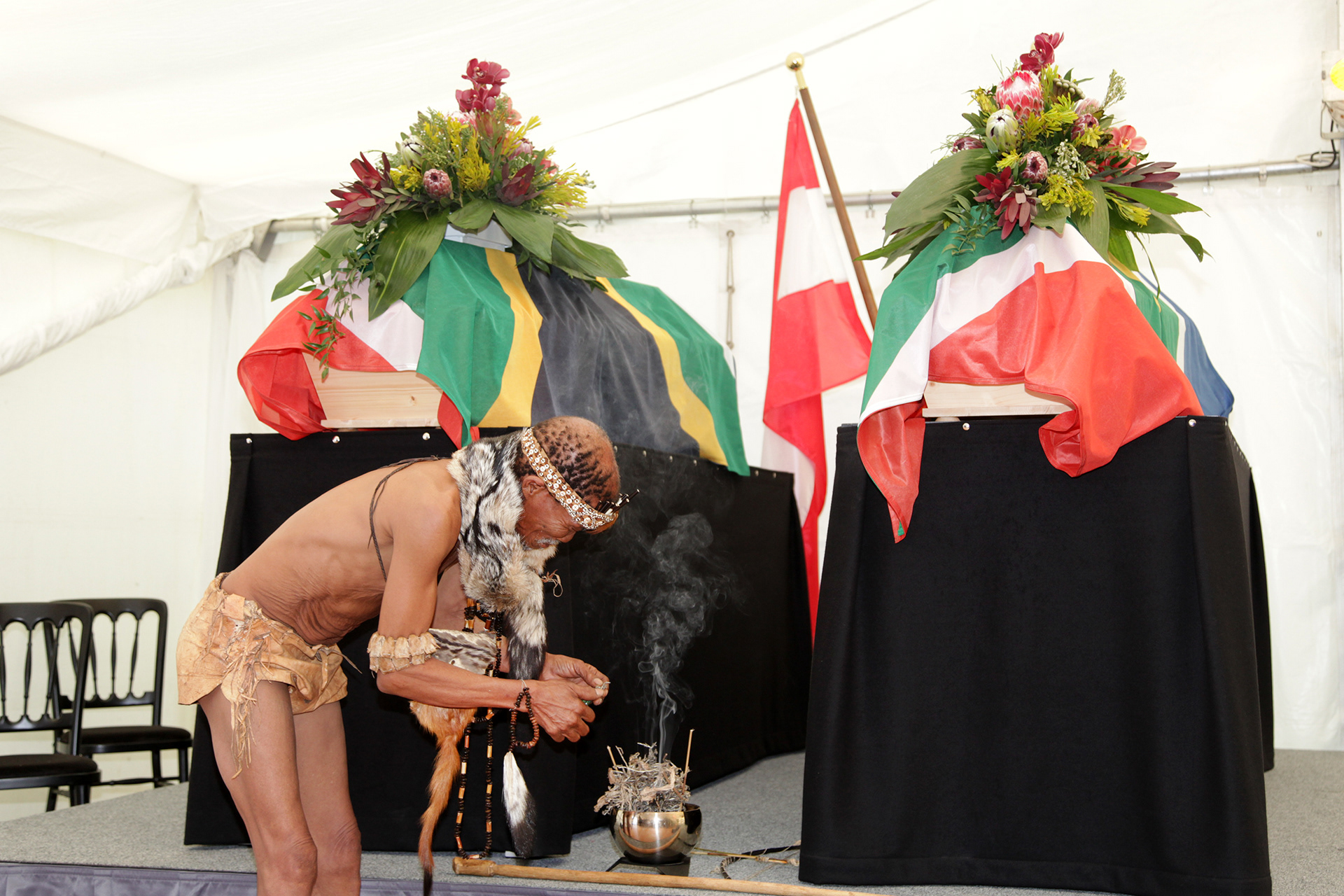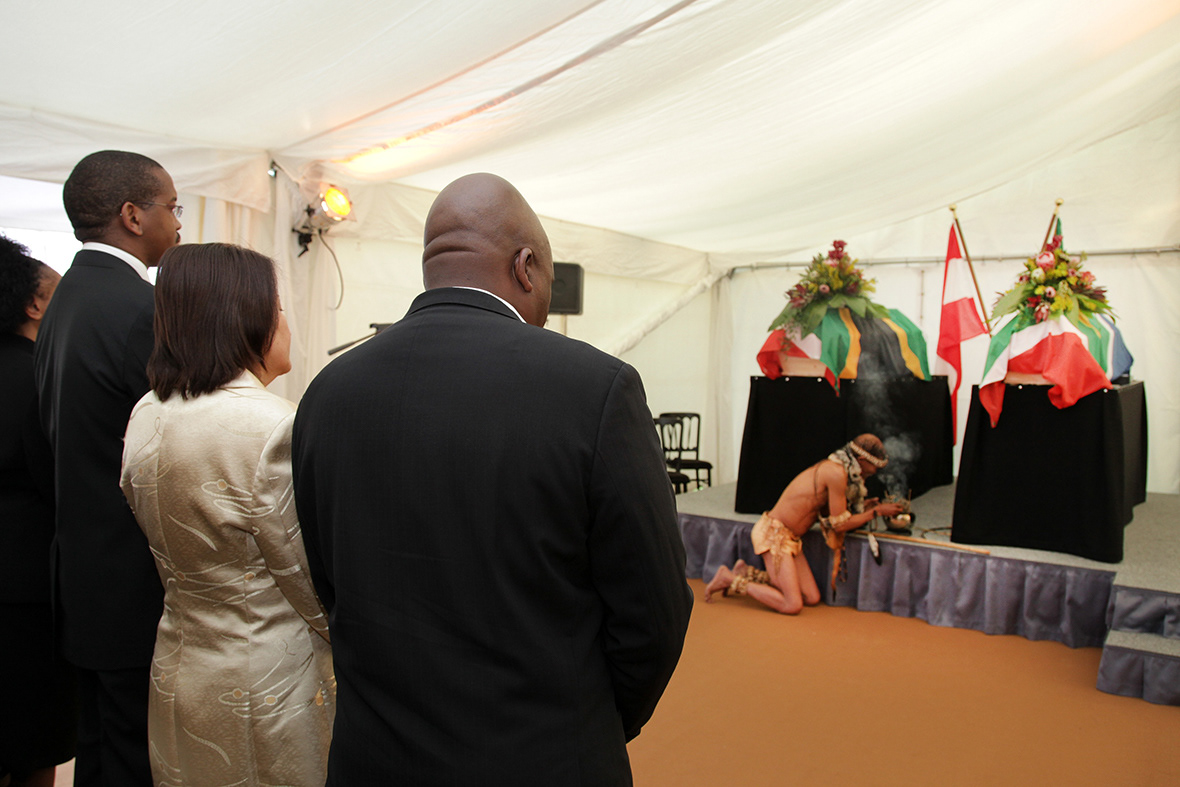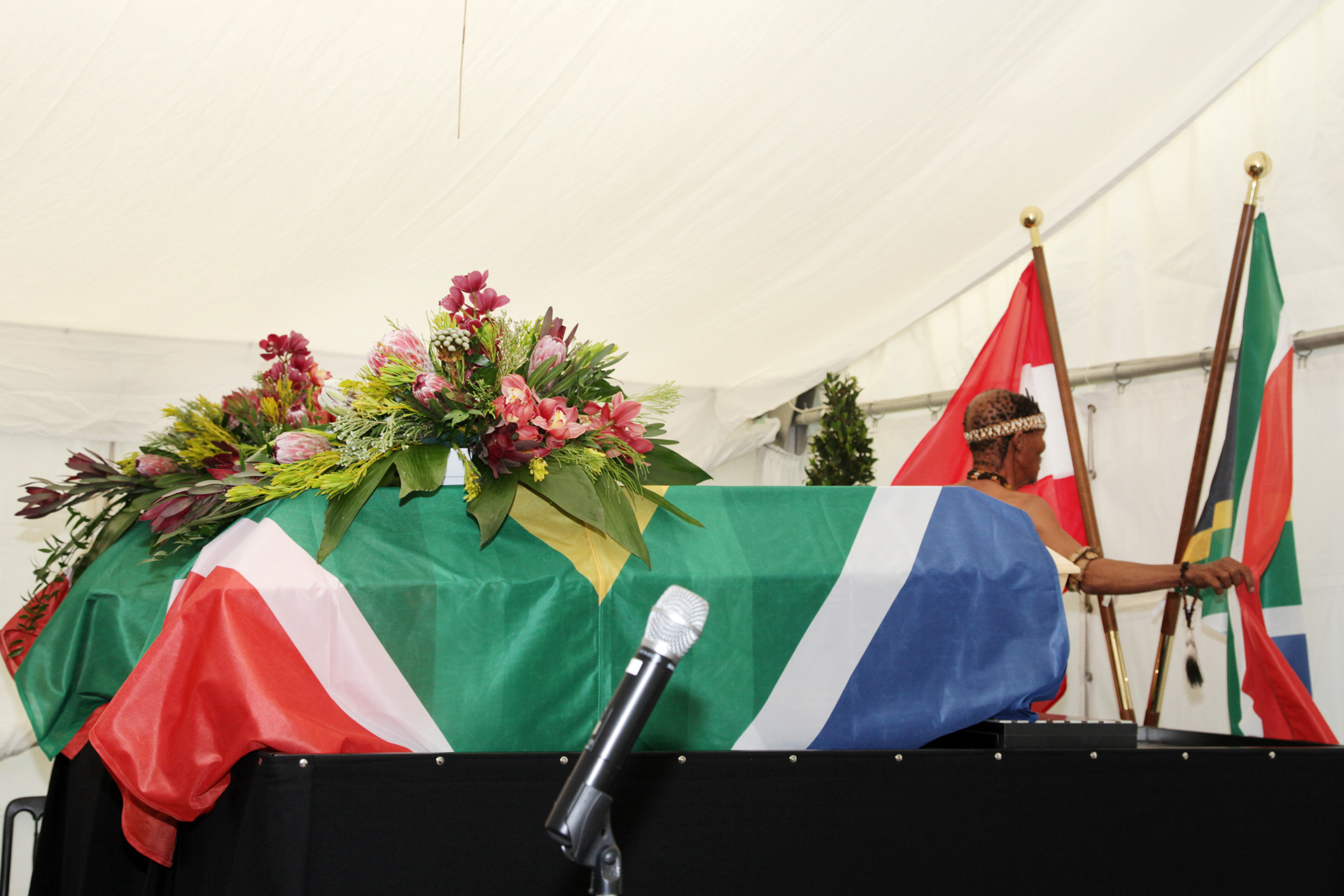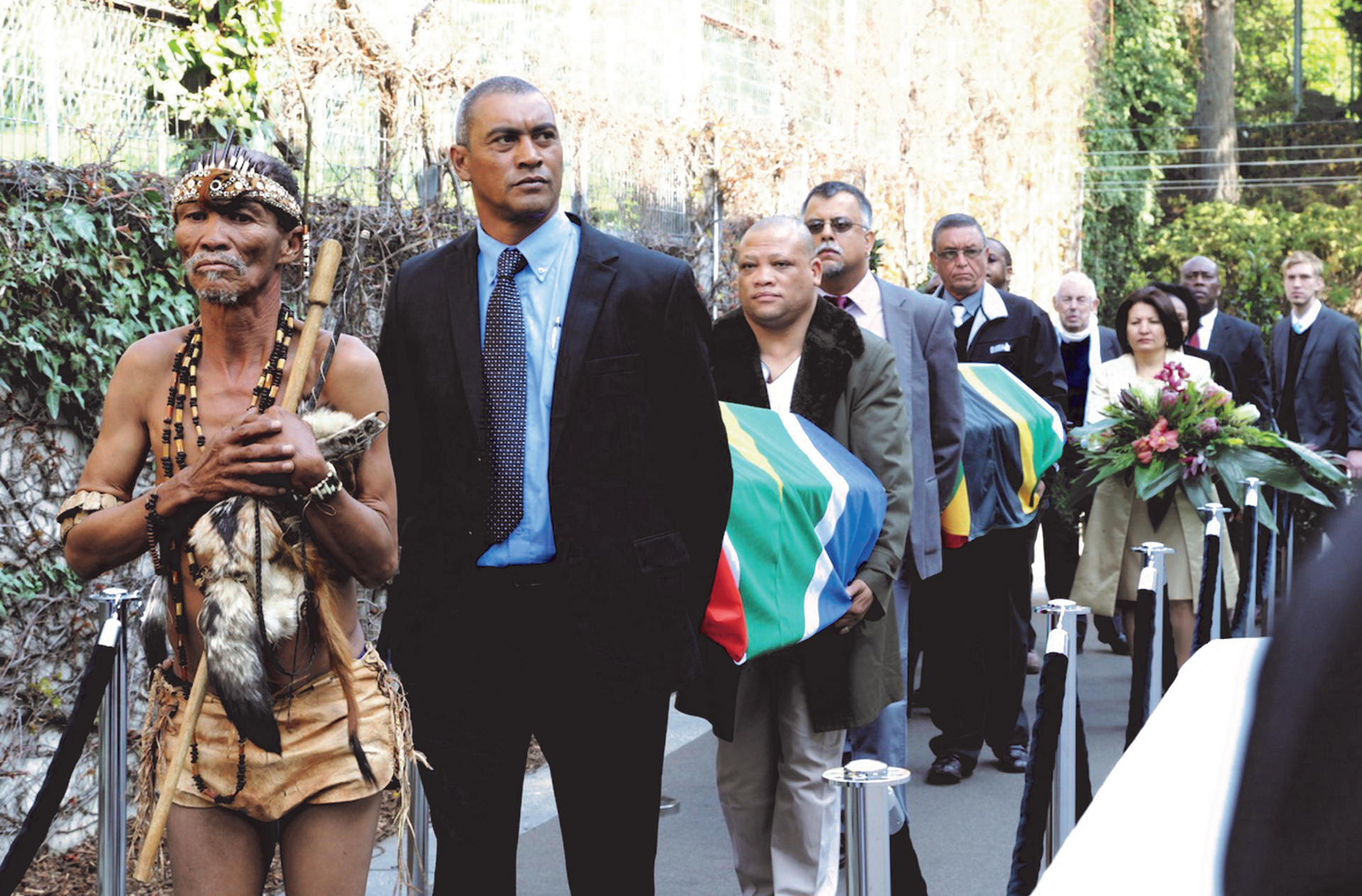
Musical contribution during the Pienaar repatriation ceremony. Courtesy of the South African Embassy, Vienna, Austria
17.04.2012 Austrian Academy of Sciences. Handing over of the human remains of the Pienaar. Courtesy of the South African Embassy, Vienna, Austria

Ceremonial incense process as part of a San death ritual performed by healer Petrus Vaalboi. Courtesy of the South African Embassy, Vienna, Austria

Ceremonial incense process as part of a San death ritual performed by healer Petrus Vaalboi. To see: Petrus Vaalboi, 'unknowing'. Courtesy of the South African Embassy, Vienna, Austria

Laying out of the human remains of the Pienaar. Courtesy of the South African Embassy, Vienna, Austria

Traditional San healer Petrus Vaalbooi leads the exodus of coffins from the South African Embassy in Vienna on April 19, 2012. Pictured: Petrus Vaalbooi, Shane Christians, Abel Pienaar, Ciraj Rassool, Cecil Le Fleur, ,Xolisa Mabhongo, Pauline Williams , Martin Legassick, Vusi Ndima, Niel van Zyl. Courtesy of the South African Embassy, Vienna, Austria
After the publication of “Skeletons in the Cupboard” by the South African historians Martin Legassick and Ciraj Rassool (2000), the circumstances of the Pienaars' body snatching became known for the first time. Within the framework of a Rudolf Pöch project, a database was to be created to carry out repatriations of digitised data holdings. In this context, the anthropologist Maria Teschler-Nicola organised a workshop at the Natural History Museum. Legassick and Rassool also presented their research results there. Due to the fact that Pöch's research was always carried out under colonial authority, his work found little space there at first.
After Legassick and Rassool presented their research findings, there was an embarrassed silence and shame among those present. They described the gruesome details about the robbery of the bodies and the transfer to Vienna. In their presentation, they were able to identify the bodies as Klaas Pienaar and Trooi Padmaker Pienaar from Gamopedi in the Kuruman district and reveal the circumstances of their death and burial. Meanwhile, historian Walter Sauer suggested that Pöch had systematically humiliated and degraded people and should no longer be regarded merely as a scientist and researcher. At this point, it became clear that the offered repatriation of digitised data files was not enough. Teschler-Nicola made the offer to secure the repatriation of the remains from the Pienaars to South Africa. Finally, at the end of 2011, the planning process began and a National Committee for the Repatriation of Human Remains (NCRHR) was established. A central concern of the committee was to see repatriation of human remains to South Africa as a method of rehumanisation, thereby making the Pienaars citizens of South Africa more than 100 years after their death.
On April the 17th 2012, a purification ritual took place in the anteroom of the Austrian Academy of Sciences (ÖAW). The traditional San healer Petrus Vaalboi told the Pienaars about the changes in their homeland and the repatriation process. At the next ceremony at the ÖAW, the vice-president of the ÖAW, Arnold Suppan, officially handed over the remains to the representatives of the South African government, the Northern Cape government and the Khoisan representatives. To underline the couple's personalities and national affiliation, their coffins were draped with South African flags. On April 19th 2012, Vaalbooi bid farewell to the Pienaars in a formal ceremony. He explained to them the process by which they would be reunited with their people and their country. The official reburial took place on August 12th 2012 at the public cemetery in Kuruman in the Northern Cape province. The then President of South Africa, Jacob Zuma, thanked the Austrian delegation with the following words:
“We take this opportunity to thank Austrian government for taking this step and for working together with us to bring finality to this painful matter. Working together with the government of Austria we were turning the tragic events that befell Mr. and Mrs. Pienaar into an opportunity for healing. It is also an opportunity to strengthen the bonds of friendship and solidarity between our two countries. […] They have been rehumanised and have regained their South African identity, 103 years after the tragedy that befell them.” (Zuma 2012)
